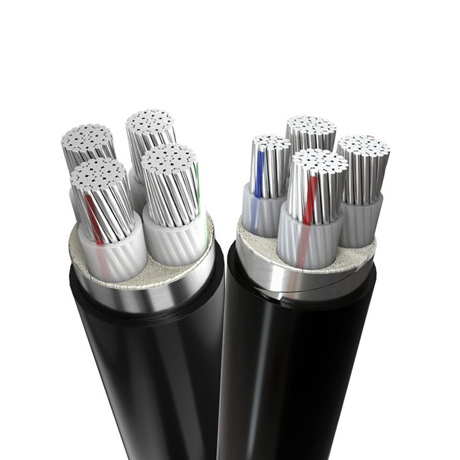Considerations Regarding Aluminum Core Power Cable
2024-04-23
Aluminum core power cables are electrical cables designed for transmitting electrical power in various applications, ranging from industrial to residential settings. These cables consist of a core made of aluminum conductors, which are surrounded by insulation materials and protective layers. Here are some key features and considerations regarding aluminum core power cables:
1. Aluminum Conductors: The core of the cable consists of stranded or solid aluminum conductors. Aluminum is chosen for its high conductivity, lightweight nature, and cost-effectiveness compared to copper. It is commonly used in power transmission and distribution systems, especially for long-distance transmission lines.
2. Insulation: The aluminum conductors are typically insulated with materials such as cross-linked polyethylene (XLPE), ethylene propylene rubber (EPR), or polyvinyl chloride (PVC). The insulation serves to protect the conductors from external factors such as moisture, heat, and mechanical damage, ensuring safe and reliable operation.
3. Shielding (if applicable): In some applications, aluminum core power cables may be equipped with metallic shielding layers to provide additional protection against electromagnetic interference (EMI) and radio frequency interference (RFI). Shielding helps maintain signal integrity and prevents external electromagnetic fields from affecting the cable's performance.
4. Voltage Rating: Aluminum core power cables are available in various voltage ratings to suit different applications and requirements. Common voltage ratings include low voltage (LV), medium voltage (MV), and high voltage (HV) cables, with corresponding insulation thickness and construction specifications.
5. Size and Configuration: Aluminum core power cables come in a range of sizes and configurations to accommodate different power transmission needs. This includes single-core cables for applications requiring a single conductor and multi-core cables for applications requiring multiple conductors within the same cable assembly.
6. Armor (if applicable): In some cases, aluminum core power cables may be armored with metallic or non-metallic materials to provide mechanical protection against physical damage, such as crushing, impact, or rodent bites. Armor enhances the cable's durability and longevity, especially in harsh or outdoor environments.
7. Termination and Installation: Aluminum core power cables are terminated using specialized connectors or fittings designed for aluminum conductors. Proper installation techniques, including cable routing, bending radius, and termination methods, are essential to ensure optimal performance and safety.
8. Standards and Regulations: Aluminum core power cables must comply with relevant industry standards and regulations, such as those set by organizations like the International Electrotechnical Commission (IEC), American National Standards Institute (ANSI), and National Electrical Code (NEC). Compliance ensures that the cables meet safety, performance, and reliability requirements for their intended applications.
When selecting aluminum core power cables, it's essential to consider factors such as voltage rating, insulation type, size, shielding, and environmental conditions to ensure compatibility and optimal performance. Additionally, consulting with a qualified electrical engineer or technician can help determine the most suitable cable solution for specific project requirements.



